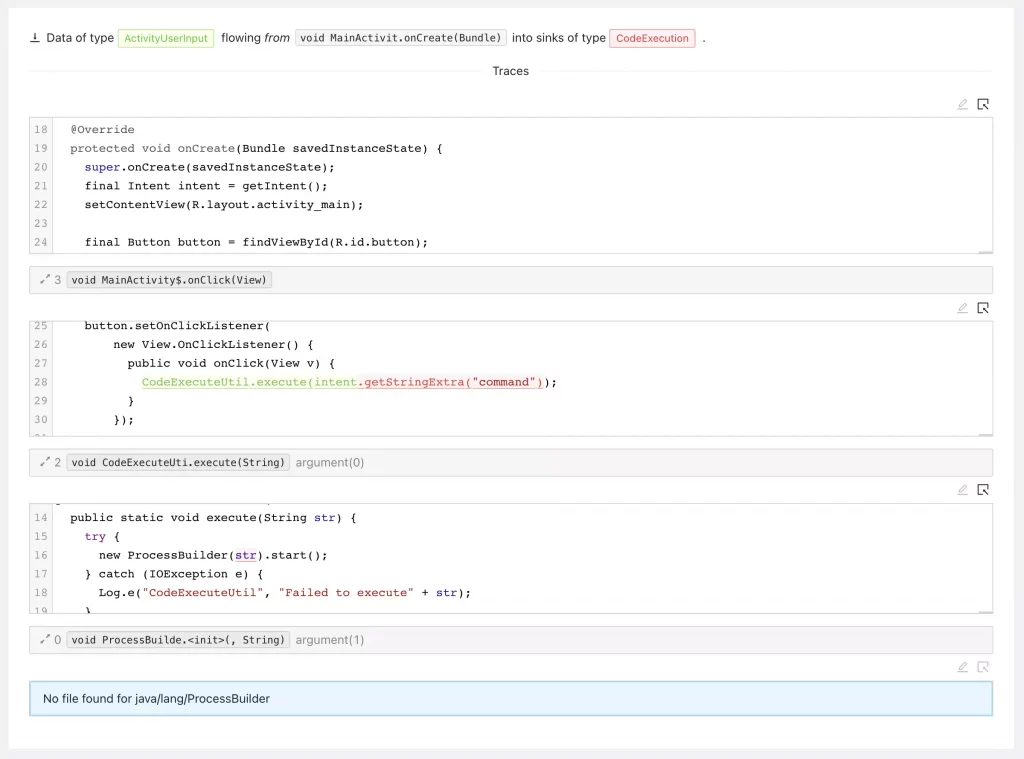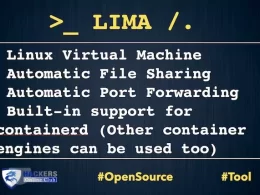Mariana Trench (MT) is an open source application security to analysis code.
Mariana Trench (MT) is an open source security suite by Facebook using to prevent security and find privacy bugs in Android and JAVA applications.
MT is designed to be able to scan large mobile codebases and flag potential issues on pull requests before they make it into production. It was built as a result of close collaboration between security and software engineers at Facebook who train MT to look at code and analyze how data flows through it. Analyzing data flows is useful because many security and privacy issues can be modeled as data flowing into a place it shouldn’t.
To help security engineers manage and triage the output, we built MT to let them quickly determine whether an issue is in fact a true positive by letting them search through results based on criteria such as the length of a trace or the specific functions encountered on a trace.
In using MT at Facebook, we prioritize finding more potential issues, even if it means showing more false positives. This is because we care about edge cases: data flows that are theoretically possible and exploitable but rarely happen in production.
This guide will walk you through setting up Mariana Trench on your machine and get you to find your first remote code execution vulnerability in a small sample app. To check application security, following steps to download and update.
Prerequisites
Mariana Trench requires a recent version of Python.
On MacOS you can get a current version through homebrew:
$ brew install python3
On a Debian flavored Linux (Ubuntu, Mint, Debian), you can use apt-get:
$ sudo apt-get install python3 python3-pip python3-venv
This guide also assumes you have the Android SDK installed and an environment variable
$ANDROID_SDK pointed to the location of the SDK.
For the rest of this guide, we assume that you are working inside of a virtual environment. You can set this up with
$ python3 -m venv ~/.venvs/mariana-trench
$ source ~/.venvs/mariana-trench/bin/activate
(mariana-trench)$
The name of the virtual environment in front of your shell prompt indicates that the virtual environment is active.
Installing Mariana Trench
Inside your virtual environment installing Mariana Trench is as easy as running
(mariana-trench)$ pip install mariana-trench
Running Mariana Trench
We’ll use a small app that is part of our documentation. You can get it by running
(mariana-trench)$ git clone https://github.com/facebook/mariana-trench
(mariana-trench)$ cd mariana-trench/documentation/sample-app
We are now ready to run the analysis
(mariana-trench)$ mariana-trench \
--system-jar-configuration-path=$ANDROID_SDK/platforms/android-30/android.jar
--apk-path=sample-app-debug.apk \
--source-root-directory=app/src/main/java
INFO Analyzed 68886 models in 4.04s. Found 4 issues
The analysis has found 4 issues in our sample app. The output of the analyis is a set of specifications for each method of the application.
Post Processing
The specifications themselves are not meant to be read by humans. We need an additional processing step in order to make the results more presentable. We do this with SAPP PyPi installed for us:
(mariana-trench)$ sapp --tool=mariana-trench analyze . (mariana-trench)$ sapp --database-name=sapp.db server --source-directory=app/src/main/java … 2021-05-12 12:27:22,867 [INFO] * Running on http://localhost:5000/ (Press CTRL+C to quit)
The last line of the output tells us that SAPP started a local webserver that lets us look at the results. Open the link and you will see the 4 issues found by the analyis.
Exploring Results
Let’s focus on the remote code execution issue found in the sample app. You can identify it by its issue code 1 (for all remote code executions) and the callable void MainActivit.onCreate(Bundle). With only 4 issues to see it’s easy to identify the issue manually but once more rules run, the filter functionality at the top right of the page comes in handy.

Single Issue Display
The issue tells you that Mariana Trench found a remote code execution in MainActivit.onCreate where the data is coming from Activity.getIntent one call away, and flows into the constructor of ProcessBuilder 3 calls away. Click on “Traces” in the top right corner of the issue to see an example trace.
The trace surfaced by Mariana Trench consists of three parts.
The source trace represents where the data is coming from. In our example, the trace is very short: Activity.getIntent is called in MainActivity.onCreate directly.

The trace root represents where the source trace meets the sink trace. In our example this is the activitie’s onCreate method.

The final part of the trace is the sink trace: This is where the data from the source flows down into a sink. In our example from onCreate, to onClick, to execute, and finally into the constructor of ProcessBuilder.

Configuring Mariana Trench
You might be asking yourself, “how does this application security suite know what is user controlled data, and what is a sink?”. This guide is meant to quickly get you started on a small app. We did not cover how to configure Mariana Trench.











